 |
 |
 |
| |
Evolution of Viral Load and Genome Sequence in a Clinical Trial of Tenofovir/Emtricitabine Combination Versus Tenofovir
Monotherapy for Patients with Previous Adefovir Dipivoxil Failure
|
| |
| |
EASL
44th Annual Meeting of the
European Association for the Study of the Liver
April 22 - 26, 2009
Copenhagen, Denmark
Reported by Jules Levin
F. Lavocat1, C. Pichoud1, P. Deny1, K. Borroto-Esoda2, J. Sorbel2, F. Rousseau2, D. Durantel1, F. Zoulim1
1U871, INSERM, Lyon, France; 2Gilead Sciences, Durham, USA
OBJECTIVE
In patients with ADV failure, it is therefore important to determine the potential benefit of a combination therapy over a switch strategy in patients with HBV DNA greater than 1000 copies/mL on ADV
The aim of the present study is to compare viral kinetics and polymerase gene resistance mutation evolution during antiviral therapy with TDF or TDF + emtricitabine (FTC) in patients with HBV DNA greater than 1000 copies/mL on ADV
AUTHOR CONCLUSIONS
InnoLiPA is significantly more sensitive to detect resistance mutations than population sequencing
Evolution of viral load was not different whether patients received combination or monotherapy
Baseline resistance patterns were not associated with type of response. A rapid response to < 400 copies/mL was correlated with low baseline viral load (p<0.05)
At Week 48, ADV-R and LAM-R mutations were found to persist by LiPA in two and one patient, respectively
17 patients have been selected for clonal analysis. These patients have been chosen for their different type of response, treatment regimen and baseline mutations
The viral quasi-species study and longer follow-up of these patients are ongoing to better understand viral kinetics and fitness during combination therapy and to evaluate the potential for cross resistance
INTRODUCTION
· Hepatitis B virus (HBV) is responsible for nearly 350 million chronic infections worldwide. More than 1 million people die each year following complication of the disease (cirrhosis or hepatocellular carcinoma)
· Two types of therapies are approved for treatment of chronic hepatitis B:
- Immunomodulation using interferon alpha. Only one third of patients respond to this treatment and inconvenient side effects are observed
- Inhibition of viral polymerase using nucleos(t)ide analogues. However, prolonged treatment with most nucelos(t)ide analogues results in emergence of resistant virus harboring mutations within the HBV polymerase gene associated with resistance to therapy
BACKGROUND
· Tenofovir disoproxyl fumarate (TDF) is a nucleotide analogue recently approved for HBV treatment. Currently, no resistance mutation has been described for TDF but adefovir dipivoxil (ADV) resistance mutations may confer some level of cross-resistance to TDF in vitro
· Combination therapy represents an emerging strategy for treating chronic HBV infection, although its added benefit is debated
METHODS
105 patients with chronic hepatitis B and refractory to ADV therapy were randomized and treated in a controlled trial of TDF versus TDF + FTC
63 patients had also been exposed to lamivudine before the trial
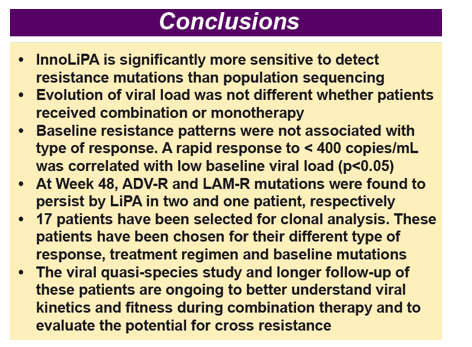
· Serum HBV DNA was quantified by real time PCR
· Resistance mutations (rtA181V/T, rtN236T, and rtL180M, rtM204V/I) were analyzed by direct sequencing of PCR products (population sequencing) and by specific hybridization assay (LiPA) at baseline and on all samples with viral load (VL) > 1000 copies/mL
· A simple logistic regression model was fit comparing baseline viral load between the slow and rapid responders
RESULTS
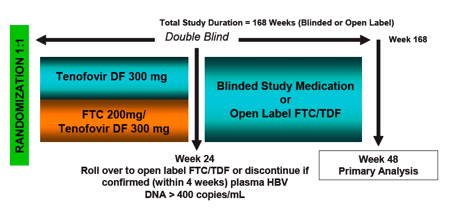
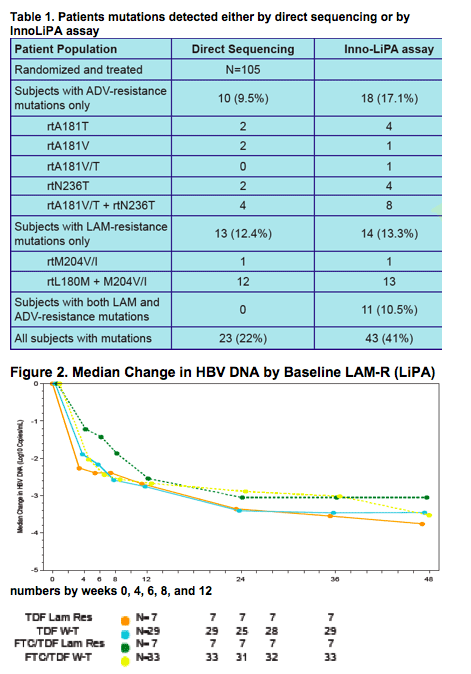
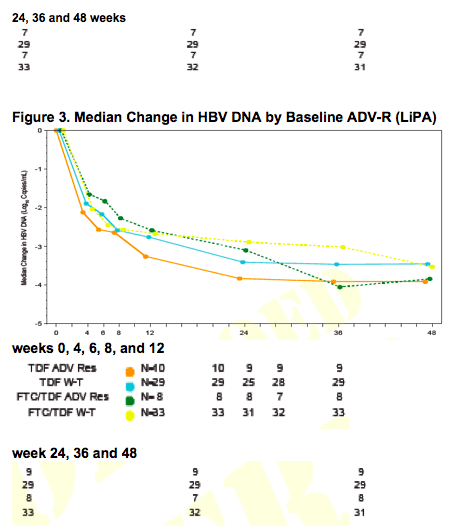
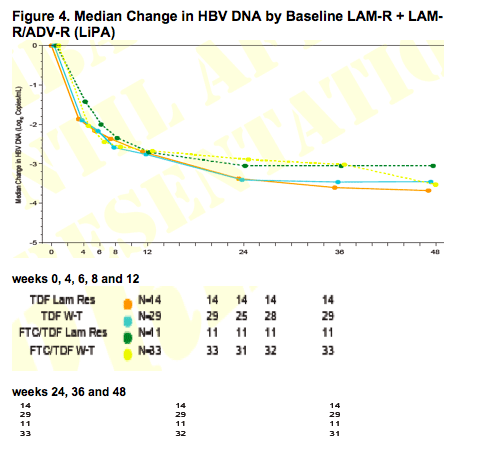
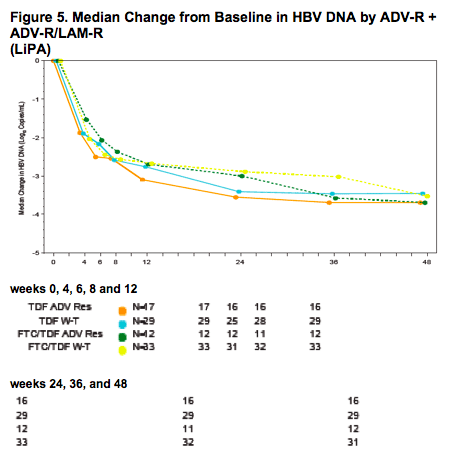
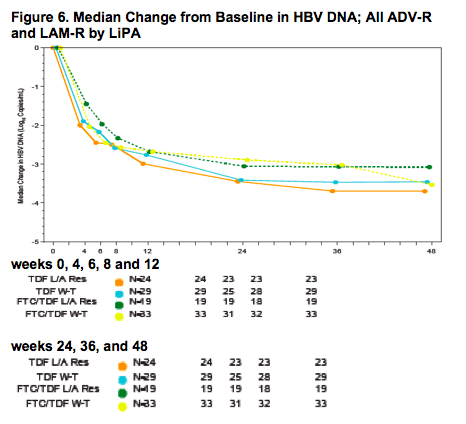
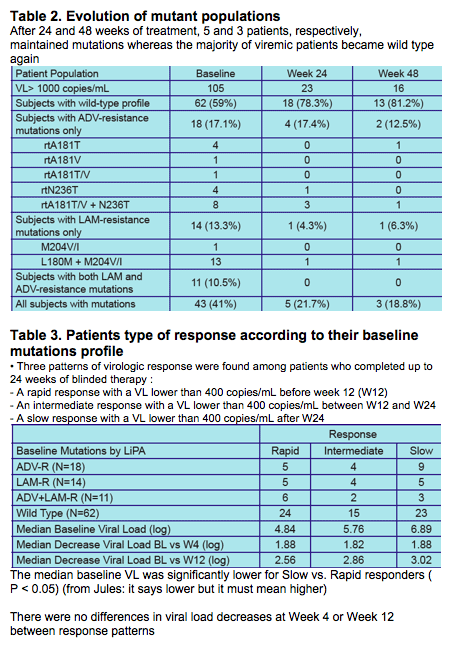

|
| |
|
 |
 |
|
|